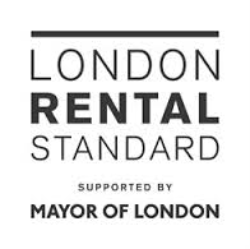Simplified Flatshares: A Manager’s Guide to Effortless Living
In the dynamic realm of property management, the art of streamlined living within shared spaces is a coveted skill. A property manager equipped with insights into simplifying flatshares holds the key to harmonious cohabitation. Let’s delve into the strategies and nuances that make flatsharing a seamless and enjoyable experience under the manager’s guide to simplified flatshares.
Understanding the Essence of Simplified Flatshares
Living in shared spaces can be a delightful journey when managed with finesse. The foundation of a successful flatshare lies in the meticulous orchestration of spaces and responsibilities by a competent property manager. This guide aims to unravel the secrets behind turning the complex tapestry of shared living into a canvas of effortless harmony.
Creating a Cohesive Environment
A crucial aspect of streamlined flatsharing is the creation of a cohesive living environment. A property manager, acting as the orchestrator, ensures that the shared space reflects a blend of individual personalities while fostering a sense of unity. From shared areas to private corners, the manager’s touch transforms the living space into a haven of comfort and shared experiences.
Effective Communication Channels
Communication is the cornerstone of any successful flatshare. A skilled property manager establishes efficient communication channels, ensuring that every resident’s voice is heard. Regular meetings, digital platforms, and open-door policies contribute to a transparent and communicative environment, resolving potential issues before they escalate.
Strategic Allocation of Responsibilities
The manager’s guide involves a strategic allocation of responsibilities among flatmates. By understanding each individual’s strengths and preferences, the manager can create a choreography of tasks that align with the collective well-being of the household. This not only lightens the burden on any single resident but also fosters a sense of shared responsibility.
Conflict Resolution with Finesse
In any communal living setting, conflicts are inevitable. A skilled property manager, equipped with conflict resolution expertise, navigates through disagreements with finesse. By addressing issues promptly and impartially, the manager maintains a peaceful atmosphere within the flatshare, ensuring that everyone feels heard and respected.
Optimising Shared Spaces
A key aspect of the manager’s guide is the optimisation of shared spaces. From communal kitchens to living rooms, the manager’s eye for design and functionality transforms these areas into inviting spaces that cater to the diverse needs of the residents. Thoughtful furniture arrangements and efficient space utilization enhance the overall living experience.
Promoting Social Connectivity
Beyond the practicalities, a successful flatshare is enriched by social connectivity. The manager facilitates bonding activities, encouraging residents to forge meaningful connections. From communal dinners to shared hobbies, these initiatives create a vibrant community within the flatshare, making it more than just a place to live.
Conclusion: Elevating Flatsharing to an Art Form
In conclusion, the manager’s guide to simplified flatshares transcends the ordinary, elevating shared living to an art form. Through effective communication, strategic planning, and a keen understanding of individual dynamics, a property manager becomes the maestro orchestrating a symphony of harmonious cohabitation. Embracing the principles outlined in this guide transforms flatsharing from a mundane experience to a tapestry of effortless living. In this harmonious setting, each resident plays a vital note in the composition of shared harmony.

















